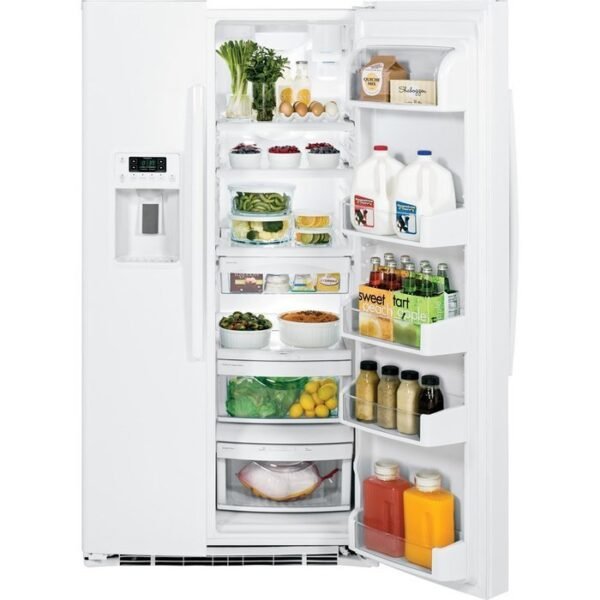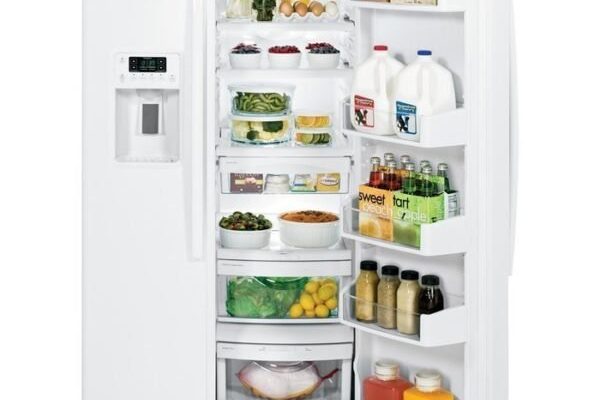
You might be wondering why your fridge even needs to talk to you in codes. Well, here’s the deal: modern refrigerators are packed with technology designed to keep them running at peak performance. Error codes are like little detectives. They point you towards the problem area, saving you from the guesswork. It’s like when your car’s check engine light comes on; you know something needs checking. But instead of a vague warning, your refrigerator pinpoints the issue a bit more precisely. Now, let’s dig deeper into this E1 code and see what might be causing it.
Understanding Error Code E1 on GE Refrigerators
Error code E1 on your GE refrigerator usually relates to a communication problem within the appliance. It’s akin to when your WiFi connection drops, and your devices can’t talk to each other anymore. In the case of your fridge, this disruption is typically linked to the temperature sensors. These are the components that monitor how cool or warm your fridge and freezer are, ensuring all your food stays fresh. If they fail, your fridge can’t keep track of its temp, leading to potential spoilage or other issues.
Imagine your refrigerator is like a climate-controlled room where sensors are the guards ensuring everything remains within the right range. When these sensors stop relaying the correct info, it could cause a breakdown in the cooling process. This is when you might see the E1 error appear. It suggests that the control board, which is the brain of your fridge, isn’t getting the information it needs from the temperature sensors.
Now, knowing this might be overwhelming, but understanding that it’s a communication hiccup sets you on the right path to addressing it. Here’s a simple takeaway: you might need to focus on checking or replacing these sensors to get your fridge back in its groove. If you’re not into DIY fixes, consider reaching out to a professional technician who can further diagnose and solve the issue.
Temperature Sensor Issues
So, let’s break down the possible trouble with temperature sensors a bit further. These components are critical because they constantly relay the internal temperature statuses back to the control board. Think of them as the thermostat’s eyes and ears. If they get dirty, damaged, or simply wear out over time, they can’t give accurate readings. It’s like trying to take a temperature reading with a broken thermometer — the results are all over the place!
If these sensors aren’t working correctly, your fridge might think it’s too warm or too cold, triggering the E1 error code. It’s essential to address this because it affects how efficiently your fridge keeps your food cold. Imagine trying to bake cookies without knowing if the oven’s at the right temperature — you’d either end up with a doughy mess or burnt crisps.
What should you do? You can start by inspecting the sensors for any visible signs of damage or dirt. Sometimes, cleaning them carefully can help restore their function. If they’re beyond repair, replacing them might be necessary. This step can sound daunting, but many guides and videos can walk you through it — or you can call in a pro to handle it for you.
Control Board Malfunction
We can’t talk about error codes without mentioning the control board, the mastermind behind your fridge’s operations. The control board, sometimes referred to as the motherboard of the fridge, orchestrates all the mechanical and electrical functions. If it’s not receiving the right signals due to a faulty connection or internal fault, it might throw an E1 error code.
Consider the control board as the main conductor of an orchestra. If one section of musicians (like the sensors) isn’t in tune, the whole symphony suffers, resulting in a less-than-harmonious performance. Similarly, a malfunctioning board causes miscommunication within your fridge, leading to potential cooling issues and inefficiencies.
To fix a control board problem, you might need a technician’s expertise, as it involves diagnosing electronic components — something akin to solving a puzzle. But before going all out, a simple reset might work wonders. Unplug your fridge for a few minutes and then plug it back in, much like rebooting a computer. If the error persists, it might be time to seek professional help.
Preventing Future Error Codes
Now that you’ve got a handle on what the E1 code is all about, let’s focus on preventing it in the future. Regular maintenance is your best friend here. You wouldn’t skip oil changes on your car, right? Similarly, give your fridge some love every now and then. Clean those coils, check the door seals, and keep an eye on the sensors.
Investing in a surge protector can also be a smart move. Just like how sudden voltage spikes can harm your computer, they can wreak havoc on your fridge’s delicate circuit boards. And don’t forget about the environment — keep your fridge in a well-ventilated space where it can breathe.
If you do encounter an error code again, don’t fret. You’ve now got the know-how to tackle it with confidence. Remember, your fridge is just trying to keep you informed and your food fresh. A little attention now can save you bigger headaches down the road.
By understanding these potential causes and solutions, you can keep your GE refrigerator running smoothly and ensure it’s a reliable kitchen companion for years to come.
